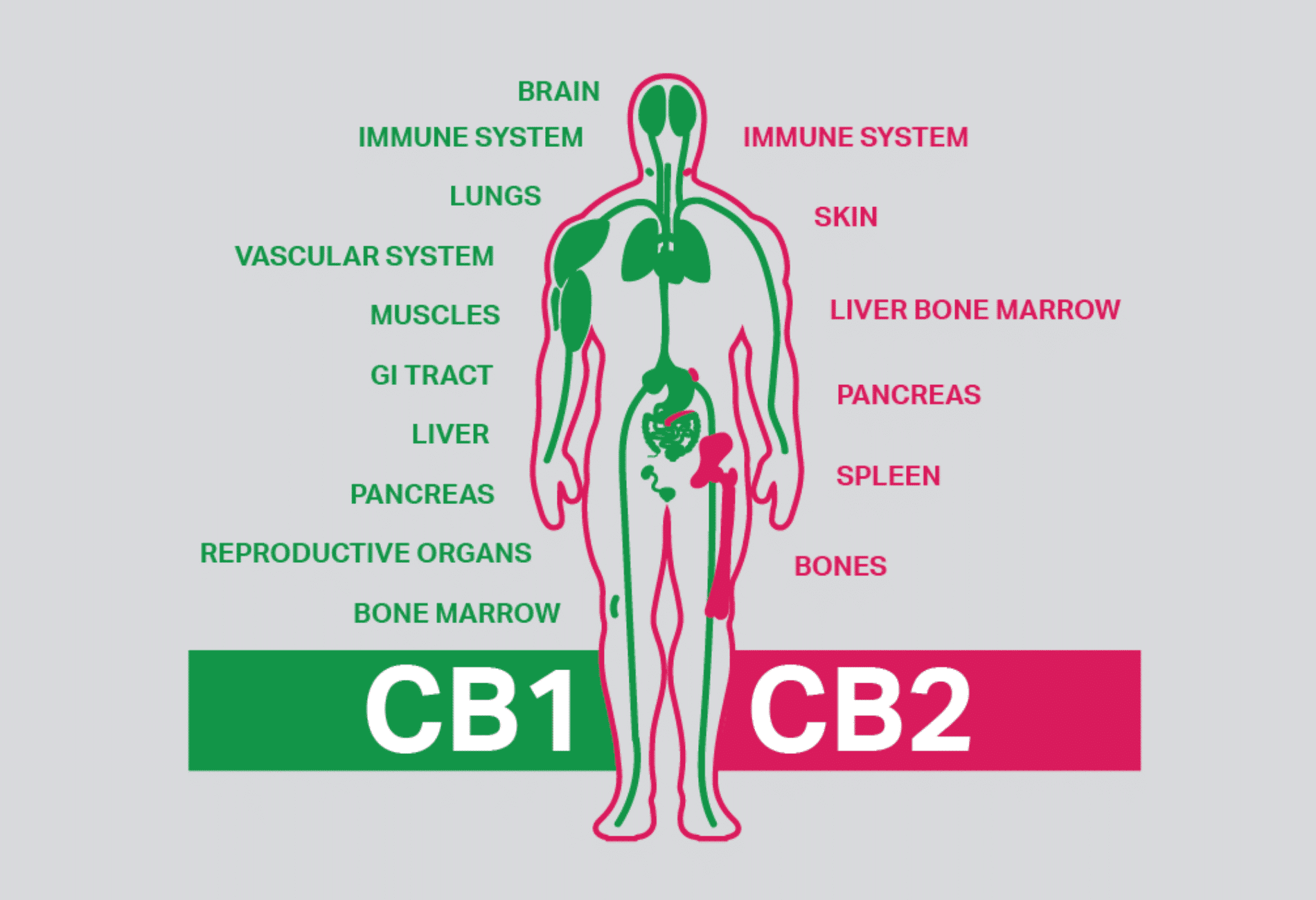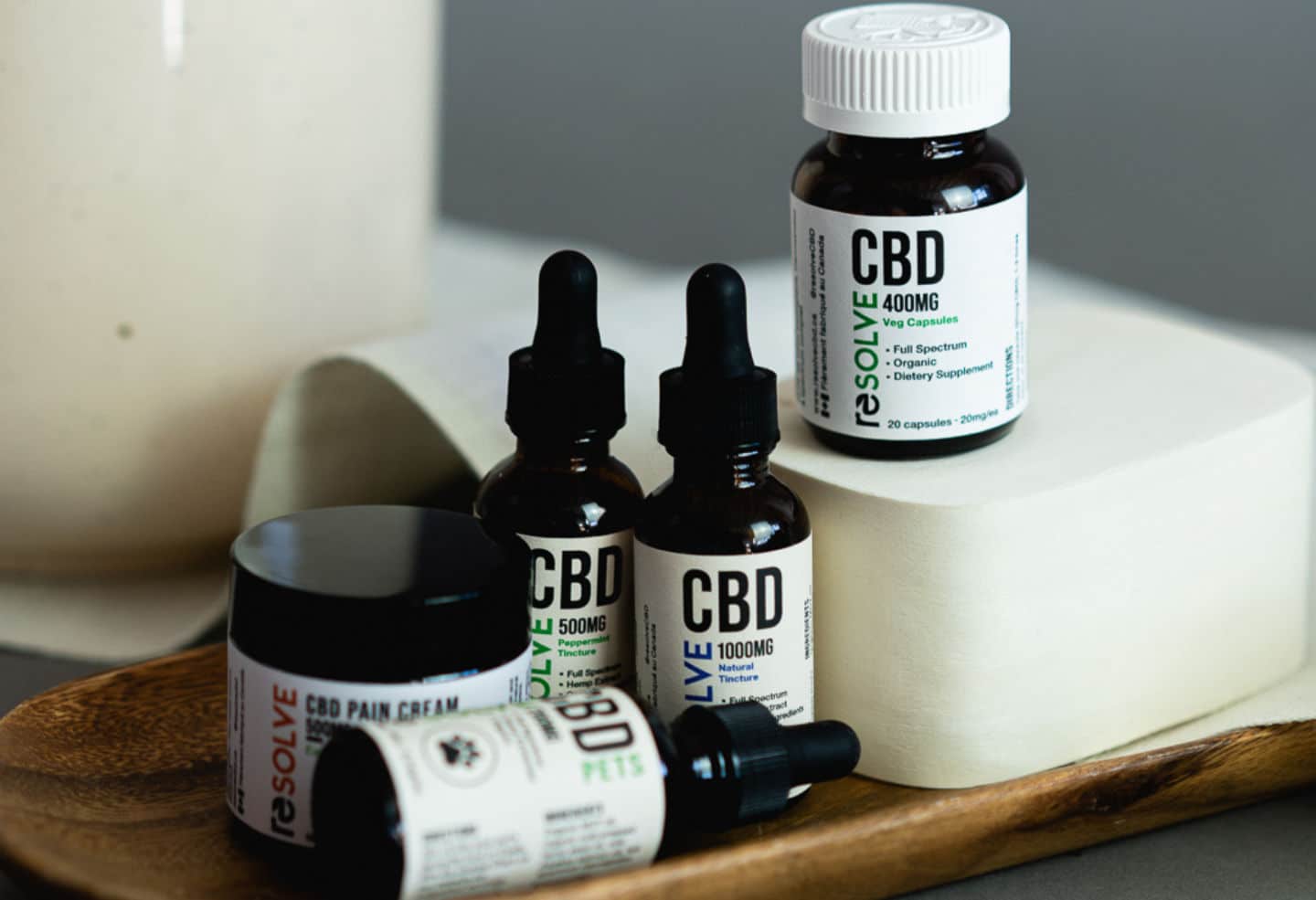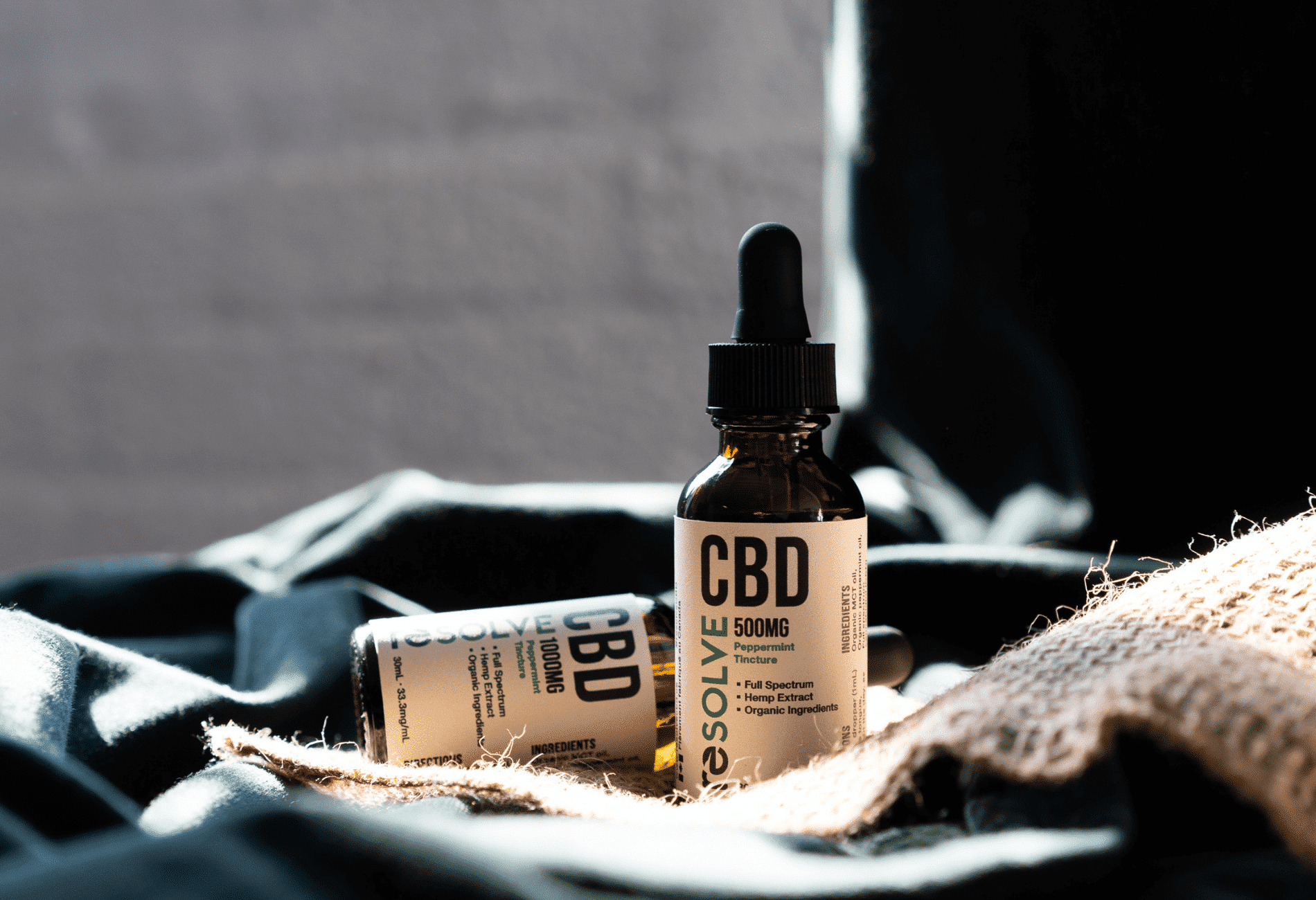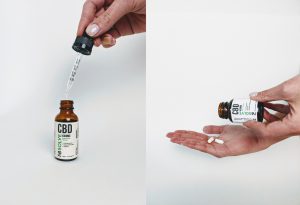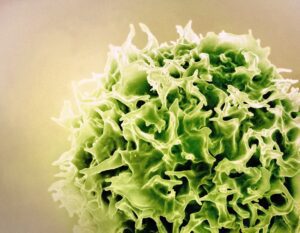CBG vs. CBD – What is CBG and how are they different?
Reading Time: 6 minutes
Most people by now have heard of CBD—the cannabinoid contained in a number of products on the market that possess a host of benefits including helping with sleep, chronic pain, and even hangovers. A lesser-known fact is that there are many more cannabinoids besides CBD and THC that reside in the hemp plant that also contain various therapeutic effects. One such cannabinoid is cannabigerol (CBG), but what is CBG and what are its uses?
Contents
CBG is a compound that was isolated decades ago but is recently gaining the interest of scientists, consumers, and the cannabinoid industry. While each type of cannabinoid contains its own unique health-related benefits, there are many overlaps between them. This raises the question of whether there are advantages to combining different cannabinoids and how these compounds interact with one another. Below is a deep dive into what you need to know about CBG and the similarities and differences between CBG and CBD. We hope that after reading this you will be in a better position to decide whether CBG is right for you.
What is CBG?
CBG is one of more than 113 cannabinoids that can be found in the cannabis plant and was first isolated in 1964. Cannabigerol is known as the “mother of all cannabinoids” because of its role in converting the other kinds of cannabinoids. Well-known cannabinoids like CBD and THC stem from a cannabinoid called CBGA or cannabigerolic acid. Through time and heat processes, the cannabinoids are converted into their non-acidic forms: CBDA becomes CBD, THCA becomes THC, and CBGA becomes CBG.
How does CBG work within the body?
Similar to CBD, CBG works by interacting with the endocannabinoid system (ECS). The ECS is a complex system that consists of cannabinoid receptors (CB1 and CB2 receptors), endocannabinoids, and enzymes. Endocannabinoids, which are compounds that are naturally found in the body, bind to CB1 and CB2 receptors throughout the body in order to help regulate a multitude of physiological functions and maintain bodily homeostasis.
CB1 and CB2 receptors are found in different areas of the body. CB1 receptors are in the brain and central nervous system, while CB2 receptors are found in the immune system (mainly in white blood cells, the tonsils, and the spleen). Many endocannabinoids may bind to these receptors but the most well-known are AE or anandamide and 2-AG or 2-Arachidonoylglycerol. AEA binds to CB1 receptors and functions like a neurotransmitter, assisting our cognitive functions and mood. 2-AG, on the other hand, binds to both CB1 and CB2 receptors and can produce an anti-inflammatory effect. Once these endocannabinoids bind to receptors, the ECS releases enzymes to break them down.
Phytocannabinoids (cannabinoids that occur naturally in cannabis plants) are found in CBG and CBD and have the same impact and functions as the endocannabinoids that your body produces. When introduced into the body, phytocannabinoids have the ability to bind to receptors in much the same way as endocannabinoids in order to help regulate the body. Ingesting CBG or CBD oil blocks the eventual breakdown of your endocannabinoids by sacrificially breaking down, freeing up more endocannabinoids so that they may bind to receptors.
Where is it found and how is it extracted?
As mentioned previously, CBG is found in cannabis plants and is extracted through a process called decarboxylation. Decarboxylation is a chemical reaction that occurs by heating a cannabinoid to the point of stripping a carboxyl group. This enhances the cannabinoid’s ability to interact with the body’s receptors. Decarboxylation needs time and high temperature to take effect. When CBGA becomes CBG, the resulting cannabinoid is able to react with the body’s cannabinoid receptors. According to a study from 2018, similar to 2-AG, CBG is partial to both CB1 and CB2 receptors and will bind to both.
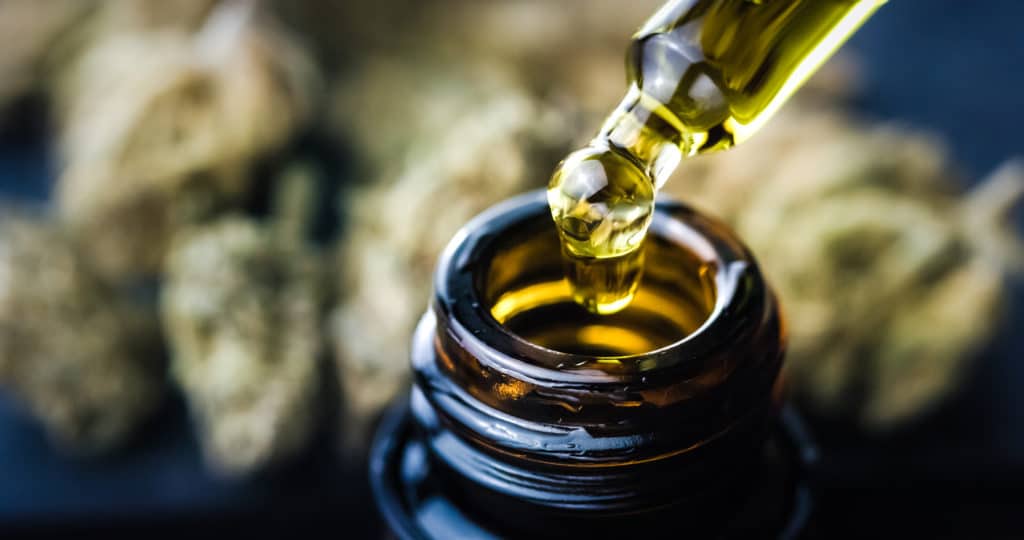
However, CBG is present in very low levels (typically less than 1%). In order to obtain higher yields of CBG, specialist plant breeders have begun to experiment with genetic manipulation and crossbreeding. Scientists can also extract higher levels of CBG from budding plants by identifying the optimum extraction time, which is approximately 6 weeks into an 8-week flowering cycle.
Why is it not as popular as CBD (yet)?
Though CBG has a vast number of potential therapeutic uses, it has not enjoyed the same popularity as CBD for varying reasons. One of the main obstacles that CBG must overcome that is not shared by CBD is the cost of its production. According to The Environmental Magazine, CBG is one of the most expensive cannabinoids to produce primarily because cultivators can extract only a small percentage from thousands of hemp plants.
To create small amounts of CBG isolate requires thousands of pounds of biomass (plant material). This is because most hemp only contains a very small percentage of CBG, unlike some hemp strains that now contain ~20% CBD. What this means is that if the CBG content of the same crop is only 1%, you need to use 20 times the amount of biomass in order to extract the same amount of CBG.
Limited availability
Along with the limited quantity of CBG in hemp, CBG a timely extraction presenting a further complication to cultivators. The more that the cannabis plant matures, the less chance of yielding any CBG because, as a parent cannabinoid, over time CBG converts to other cannabinoids. This leaves cultivators with a dilemma: either they allow their crop to fully mature so that they can be sold for many purposes and risk losing the CBG content, or grow their crop for the express purpose of CBG extraction by harvesting early and lose out on its other benefits.
Finally, CBG extraction requires the use of specialized equipment. Because of the low level of CBG present in cannabis, the chromatography apparatus used to isolate and purify CBG extracts needs to be as precise as possible in order to avoid consuming additional raw cannabis or hemp material. The cost of this machinery can be an expensive, up-front cost for processors who might not already require them for their standard procedures.
What are the main differences between CBG and CBD?
Differing molecular structure
CBG differs from CBD in several important ways. For one, cannabigerol and cannabidiol have disparate molecular structures. This refers to the number and organization of hydrogen, carbon, and oxygen atoms that comprise a cannabinoid. Because CBD and CBG have differing molecular structures, they will inevitably bind to the body’s cannabinoid receptors in different ways and, as a result, produce different effects.
Interact with receptors in opposing ways
Additionally, CBD and CBG activate cannabinoid receptors in diverging ways. A 2011 study published in Psychopharmacology, for instance, compared the effects of CBD and CBG at the 5-HT1A serotonin receptor. The study found that CBD produces its anti-nausea effects because of its partiality for the 5-HT1A receptor and by acting as an agonist (activator). On the other hand, CBG acts as an antagonist (blocker) at the 5-HT1A receptor. These findings demonstrate that, although the cannabinoids bind to the same place, they behave in opposing ways.

Differing effects on appetite
Research has suggested that CBG can function as an appetite stimulant. A study conducted on rats and published in 2016 found that doses of CBG encouraged the animals to eat more than double the amount of their normal food intake. However, additional trials need to confirm this claim as a different study published in 2012 demonstrated that CBG did not induce a change of eating pattern, while CBD reduced total food intake.
Antibiotic properties
Lastly, CBG has demonstrated that it has great potential as an effective antibiotic. In a study published in 2020 testing the antibacterial potential of 18 different cannabinoids against MRSA, researchers found that CBG outperformed all of them and worked as well as vancomycin, a powerful antibiotic.
Is one better than the other?
Along with affecting the body in similar ways, CBG and CBD have many attributes and benefits in common. However, as stated above, CBG possesses its own unique benefits and the two cannabinoids are entirely different compounds with their own distinct chemical structures. Though they have overlapping properties, there remains a vast amount of research that is required so that we understand the full scope of these cannabinoid’s effects on the body.
Nonetheless, it is not a matter of arguing CBG vs. CBD. Rather than try to assess whether one is better than the other, it is more helpful to pinpoint the symptoms and issue you are experiencing and examine which cannabinoid is better able to combat the problem. Different bodies respond in their own way to substances so it may be that one person finds the effects of CBD to be more beneficial than CBG, while another person may find the opposite to be true.
It’s also important to note the potential benefits that could arise from combining the two cannabinoids. Combining cannabinoids can produce a phenomenon called “the entourage effect.” Because the components of the cannabis plant likely exert some therapeutic effect more than any one single compound alone, the entourage effect suggests that these compounds work better together than in isolation.
Conclusion
All in all, much more research still needs to be conducted before we have a complete grasp on the ways and degrees to which CBG functions in the body. However, with the studies currently available, there are hopeful signs that CBG can be a useful alternative to traditional medicine and can supplement your current CBD intake. Dosage will depend on individual needs but, in general, it is best practice to begin conservatively and increase the dose as required.
For those interested in exploring the broader landscape of cannabinoids in Canada, CBD, CBN, and CBG Oil Canada: What You Need to Know offers additional insights into the potential benefits and uses of these compounds.
Written by: Rahaf Khalil
DISCLAIMER: Information and products presented by resolveCBD are not intended to diagnose, treat, cure, or prevent any disease or ailment, nor is it intended to be a substitute or alternative for professional medical advice. Always consult with a licensed professional regarding medical treatment or possible interactions with prescribed drugs. Products are intended to be used as directed, by individuals who are 19 years of age or older.


